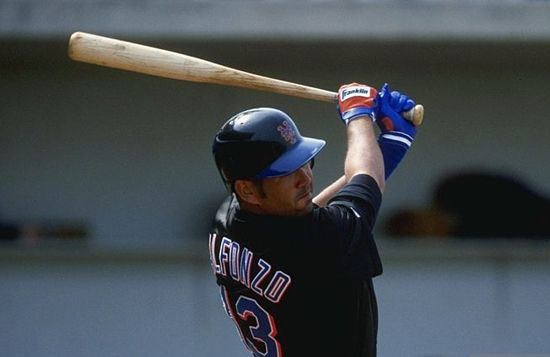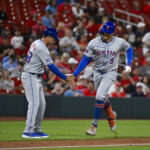Earlier this week, MLB and the MLBPA met on back-to-back days in an attempt to negotiate a deal that could possibly end the current owner-imposed lockout. Any hope that a deal can reached before the date for pitchers and catchers to report for Spring Training may have gone up in smoke as The Athletic’s Evan Drellich reported that people with knowledge of the discussions taking place have said that MLB Deputy Commissioner Dan Harem has said that MLB is willing to lose games.
This rhetoric from owners has begun to bring back memories from the 1994 strike that began in August of that season. The strike of 1994 caused the cancellation of the entire postseason, and introduced us all to replacement players before MLB and MLPA finally came to an agreement that led to the 1995 season beginning in late April.
The strike caused a ripple effect across the baseball card industry. From a massive decrease in sales to card companies going out of business, the industry suffered and did not begin to show signs of rebounding until this past decade. Whether or not MLB does eventually lose games, I don’t see the impact of the current labor stoppage to cause the same issues that started with the release of the 1995 baseball cards.
Unlike in 1995, baseball cards do not drive the overall industry. Instead, baseball is a distant third to basketball and football, which has products going for much more money than anything Topps has been printing. Industry insiders suspected the COVID-19 pandemic would destroy the hobby without live sports, but the pandemic had the opposite effect as the industry entered a roaring renaissance period with skyrocketing sales on the secondary market and box stores like Target and Walmart suspending sales due to employees receiving threats of violence by new hobby enthusiasts.
We’re still more than two weeks away from the release of 2022 Topps Series One and another six weeks away from the release of 2022 Topps Heritage. Until then, let’s examine some of the more exciting and forgotten baseball card sets released in the year that saw the baseball card industry fall apart: 1995.
Emotion

Emotion was a new product released in 1995 by Fleer/Skybox International after Fleer had acquired the basketball card manufacturer. The Emotion set featured sharp player pictures on a borderless card that showcased two player pictures on the back to go with the previous year’s statistics. Much like every other set from 1995, you can find cards of players like Bobby Bonilla, Rico Brogna, Bobby Jones, and Bret Saberhagen. Also included is Generation K member Bill Pulsipher and Met legend Edgardo Alfonzo in the base set and the Rookies insert set.
The Emotion set would change its name the next year to E-X. Fleer continued to include the product in its yearly releases until Fleer would file for bankruptcy in 2005.
Leaf Limited

Donruss’ best release of 1995, Leaf Limited was exactly that: limited. With a print run that included roughly 45,000 boxes with each box containing 20 packs with five cards per pack, Leaf Limited had an estimated print run of 29,850 copies of each card in the 192-card set. Included in the seven-card Mets team set were Bobby Bonilla, Bobby Jones, Jeff Kent, Todd Hundley, Ryan Thompson, Rico Brogna, and the newly acquired free agent centerfielder Brett Butler in one of his many cards in a Mets uniform.
With Donruss striking out on their other three releases in 1995, the affects of the strike clearly hit the company’s bottom line. At the time, Donruss was owned by a Finnish company that sold the brand to Pinnacle in 1996, although, that would prove to be short-lived as Pinnacle filed for bankruptcy in the summer of 1998 causing the Donruss brand to disappear. In 2001, Donruss was resurrected by the football card manufacturer Playoff, who had purchased the brand after the Pinnacle bankruptcy. This also proved to be short-lived as Playoff lost their licensing agreement after the 2005 season. Nine years later, Panini America resurrected the Donruss brand and it continues on today, however with no licensing agreement from MLB, with team names and logos not included anywhere on the cards or the player pictures.
SP

By 1995, Upper Deck was the industry leader in high-end products and SP was its most premium release. Upper Deck released three separate SP products in 1995 that offered collectors and Mets fans some excitement in each product.
The 207-card SP base set was a product more focused on Upper Deck’s staple of cutting-edge photography with a one-sided border on the left of each card. Included in the set is the Premier Prospects die-cut card of Edgardo Alfonzo sporting a number 47 jersey that he is seen wearing in several other Upper Deck releases.
The SP Championship Series release was a much smaller set that featured Pulsipher, Alfonzo, and Jason Isringhausen in its Diamond In The Rough subset. The SP Championship Series took Upper Deck’s minimalist approach even further by having no border with the player’s name along the left side of the card, brand logo in the bottom left corner and a blue oval in the right corner with the player’s team name in the middle of the oval.
Upper Deck’s last SP release was the SP Top Prospects set. The SP Top Prospects was Upper Deck’s premium brand of minor league cards that include cards of all three of the Mets 1994 first round draft picks Paul Wilson, Jay Payton, and Terrence Long, as well as other top prospects Rey Ordóñez, Preston Wilson, and one-year wonder Sean Johnston.
Topps
Topps executives must have really spent time thinking about the direction of the company during the strike because, in my opinion, every product that they released in 1995 was much better than the previous year. Even their Topps Finest set that had a background that always reminded me of the opening credit sequence from Bill & Ted’s Excellent Adventure.
For several years, Topps’ main product had lackluster, boring, and in some cases, downright hideous designs. Their 660-card set, which was also the smallest set for their flagship product in 30 years, had an increased selling price of $1.29 a pack compared to $.79 a pack the previous year. The quality was clear, though, as the white bordered card included the player’s name in gold across the bottom with a high gloss finish. The card back includes a “Diamond Vision” portrait on the back, along with an action photo. The set includes all three of the Mets’ 1994 first-round picks, Paul Wilson, Terrence Long, and Jay Payton, a crisp black striped Future Star card of Bill Pulsipher, a Top SS Prospects card that includes Rey Ordóñez, and an On Deck card featuring Jason Isringhausen, as well as former first-round pick Chris Roberts. Topps also included a Cyberstats card in each pack. The Cyberstats cards include computer simulated stats for games that were missed due to the strike in attempt to project how each player would have fared had the season continued uninterrupted.
Their Topps Traded set included Edgardo Alfonzo, newly acquired Mets Brett Butler, Dave Mlicki, Pete Harnisch, 1995 first-round pick Ryan Jaroncyk and the only Mets card of Jeff Barry, who turned out to be a surprise addition to the Opening Day roster.
Topps Stadium Club
Taking a page from Upper Deck by using a minimalist approach to their card design, the Topps Stadium Club product has no border and instead utilized a player picture that took up the entire card. The photography used on the Topps Stadium Club product was light years ahead of other Topps products and this set was no different.
As with other products, you will find cards of Terrence Long and Paul Wilson with Edgardo Alfonzo in the extended sets. What makes this set so remarkable is the sharp photography has you enjoying the cards of such Mets as Bobby Bonilla, Jason Jacome, and even Josias Manzanillo. I’ve become such a big fan of this set that I’ve decided to work on piecing together their parallel set, Virtual Reality.
Upper Deck

A year after releasing what were easily the two best card designs in 1994, Upper Deck somehow managed to outdo itself with the release of their flagship product. Using its trademark top-notch photography, Upper Deck utilized a borderless design with a full card player picture that managed strong action player pictures on cards of Mets players like Todd Hundley, Bobby Jones, David Segui, Jeff Kent, and Brett Butler, to more organic shots of Jason Jacome and John Franco.

As if the player pictures on the front weren’t enough, they took it a step further with another full card player picture with the stats overlayed on the bottom of the card. For me, the highlight of the set is the Top Prospects subset. With a silver stripe along the right side of the card with the words “Top Prospect” and the player’s name in Mets blue, Upper Deck went with players in staged poses or staged action poses. With each member of Generation K making an appearance in series one of the Upper Deck set, series two included Edgardo Alfonzo, again sporting the number 47 jersey, and pitcher Robert Person.
Bowman
The 1995 Bowman set was the best release of the 1995 season with the best design, and without a doubt the best card design of any Bowman release since Topps resurrected the brand in 1989. I will die on that hill
A 439-card set that features 220 rookies and prospects, 54 silver foil cards featuring the top prospects from each team, and 165 veterans, the cards feature a white border with light green along the left and brown along the bottom that are mirror images of the player picture. The card back features another player picture on the back with the previous year’s stats along with the type player information that Bowman has become known for.
“Consistent, productive hitter who drives in runs and may develop major league home run power…” was an apt and prophetic description of Edgardo Alfonzo.
“Can change a game with his glove alone, making plays that seemingly defy human limitations…” was how Bowman described the defensive skills of Rey Ordóñez.
However, it’s the personal tidbits that are included that I have always found the most fascinating.
Did you know that Carl Everett was a “former member of an amateur singing group that performed in his Tampa neighborhood.”?
Or did you know that before the Mets eventually traded Robert Person to the Blue Jays for John Olerud, his “Eventful career path has included being drafted by the Indians, loaned to independent team, traded to White Sox, picked by Marlins in Expansion Draft, released and re-signed then traded to Mets.”?
Or that Bill Pulsipher is “A tad eccentric, but channels competitiveness into his game.”?
An absolute packed set that included Mets prospects Alfonzo, Ordóñez, Everett, Person, and Pulsipher, plus Chris Roberts, Ricky Otero, Paul Wilson, Kirk Presley, Jason Isringhausen, and Jay Payton.
The set also features rookies cards of future former Mets Bobby Abreu, Lou Collier, Juan Acevedo, Bartolo Colon, Brian Buchanan, John Thomson, Raul Casanova, Karim Garcia, Mark Johnson, and Hideo Nomo. You can also find rookie cards for Hall of Famer Vladimir Guerrero, Yankee manager Aaron Boone, Scott Rolen, Andruw Jones, and Heisman Trophy winner and former Carolina Panthers quarterback Chris Weinke.
As you can see, 1995 was full of strong and what has become overlooked products. Despite all of this, collectors across the country moved away from the hobby in droves. This caused decreased value in individual cards and plummeting sales, which ultimately led to massive decreases in production, layoffs, and the bankruptcy of multiple major card companies.
Twenty years later, however, the industry now is driven not by the actual games being played, but more by the ability to cash in almost instantly by selling cards online. In my opinion, the speculation in price values, which also helped lead to the card companies making the poor decision of mass producing and increasing the number of sets, is of more concern to damaging the hobby as opposed to a labor shortage.
Here’s hoping to the vicious cycle not repeating itself.
















